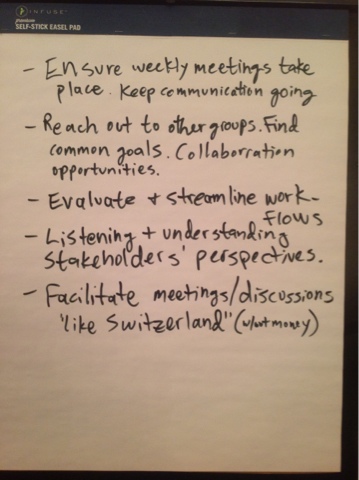Big issues for senior administration for Colleges and Universities- Standards for diversifying the student body
- Accessibility (Socio-economic)
- Budgets (Private and State)
- Student well-being and stress (How do you advise students to not overdue)
- Aging faculty and lecture (or adjunct faculty) respect
- Global initiatives
- Assessment and accreditation
- Athletics and costs for facilities and resources
Supporting faculty and their research
Are we at a transformation point at higher education?
Will online education
Flipping the classroom is a huge priority in education.
Debates are ongoing regarding Online learning how it will change Education.
ETextBooks - How do you interact with content, mentors and people in the industry.
Communication and collaboration (Q&A)
What's on the minds of compliance related issues?
Context is very important to answering compliance.
How do you communicate with leadership?
About understanding the business needs of the institution or university. Partnership is important for success. Expressing ideas and compelling case to Senior Administration.
Governance Structure for IT?
(@Northwestern University) Educational Technology Advisory - Under the Provost - Committee is lead by Faculty and determine priorities for the institution. Not the same group for online education.
If you have a large turn over in IT, how can we continue to be successful?
Effort in communication and hope
Is top down more effective than bottom up?
Both is important and a vision and communication across the institution (up/down and side to side) is needed. Communication - projects presented must be connected to the overall strategic plan for the institution.
Online Education and how IT fits into the conversation.
IT can not abdicate responsibility from online education. Provost office drives the initiatives and IT supports them.
How to keep innovation occurring?
Balancing central vs de-central relationships to hep nurture innovative ideas
- Center is accountable to encourage innovation to occur.
- Other areas to support and develop innovative ideas
Initiatives must be scalable and supportable
How to you support these pilots and innovative ideas?
Being able to articulate innovative ideas to administration. How important is it and what are you putting into it? Departments shift resources to support this idea. Admin and departments must create metrics to measure success.























